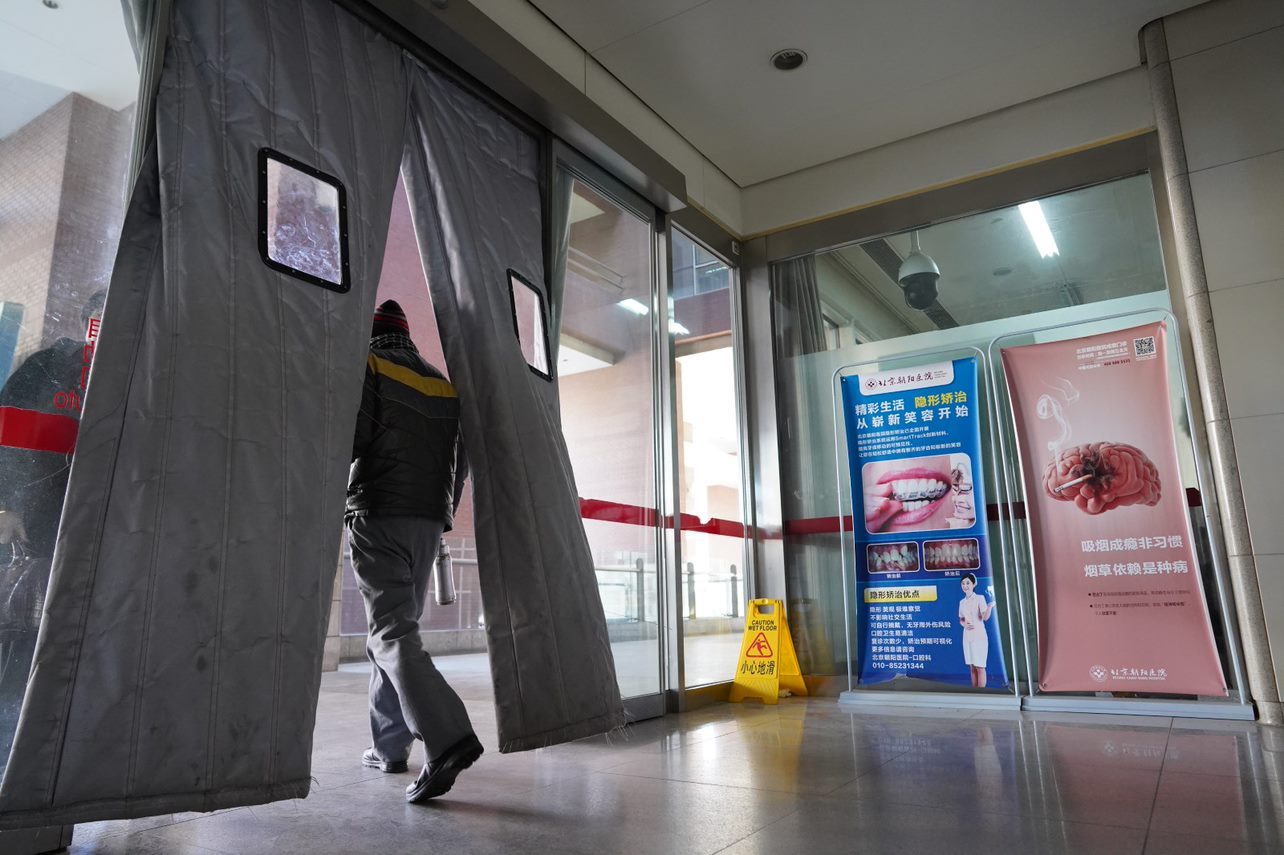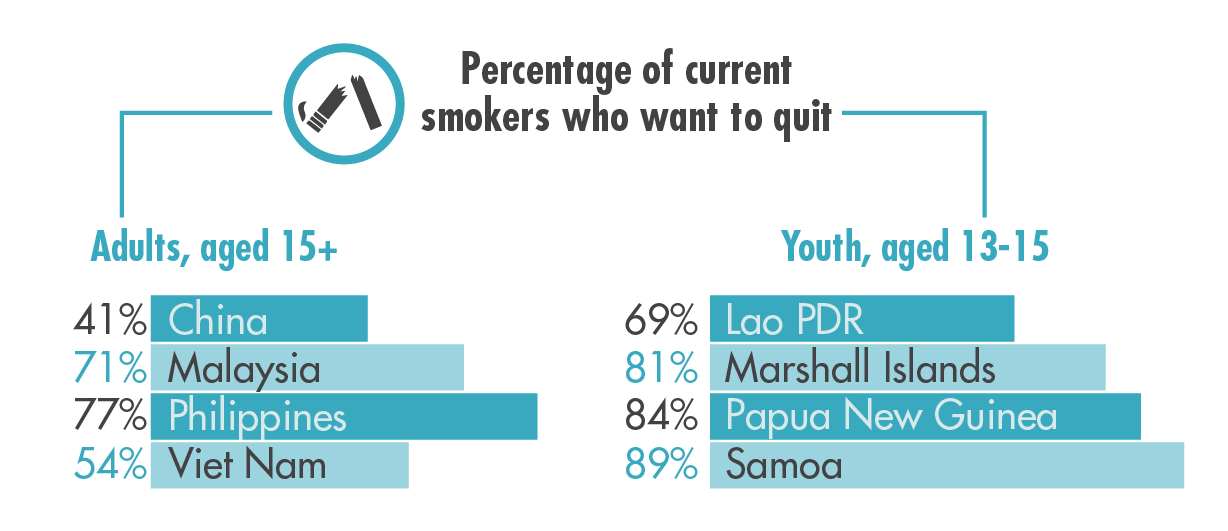Many smokers in the Western Pacific Region have been prompted by coronavirus disease 2019 (COVID-19) to kick the habit, but the pandemic has also brought fresh challenges for the fight against tobacco.
When Mr Li, a man from Beijing, learned how COVID-19 affects smokers, he decided it was time to quit. He had smoked more than 20 cigarettes a day for 30 years but feared becoming a financial burden to his family if he became sick. After two months of cessation counselling and medication, he is now smoke-free and has started enjoying a healthier life.

Photo credit: ©WHO/Yikun Wang
RT, a man from Iloilo in the Philippines, was similarly afraid of being infected and dying from COVID-19, so he decided it was the right time to quit smoking. Determination to live healthily, support from his family and smoking cessation counselling with a pulmonologist were keys to his success.
Mr Li and RT are not alone. Even before the pandemic, 60% of adults worldwide who smoke said they wanted to quit. According to the Global Youth Tobacco Survey in 2016 and 2017, most young smokers in the Western Pacific Region wanted to stop as well, as the chart shows.

Tobacco-related illnesses such as heart disease, stroke, lung cancer and other cancers are among the leading causes of death, claiming the lives of five people every minute in a Region where one in four adults is estimated to smoke.
COVID-19 brings new risks for tobacco users. A WHO scientific brief highlighted the link between smoking and more severe COVID-19 and death. Smokers and vapers may be more vulnerable to contracting COVID-19 in the first place, as the act of smoking involves contact of fingers with the lips, which increases the possibility of transmission of viruses from hand to mouth.
But the pandemic has made quitting more difficult.
This year, tobacco and related industries have aggressively promoted electronic nicotine delivery systems (ENDS) such as e-cigarettes and heated tobacco products. The industry has offered free branded masks and home delivery during quarantine and lobbied for tobacco products to be listed as “essential”.
Sales have reportedly increased in some countries in 2020 over 2019. Apart from easier access to tobacco and more promotional activity, possible reasons for an increase include stress, physical isolation, uncertainty about the future, rumours about the effect of tobacco and the virus, and rising unemployment, which is associated with increased smoking prevalence.
Even before the pandemic, most tobacco users worldwide wanted to quit, but only 30% had access to the tools recommended by WHO such as such as toll-free quit lines, text-messaging cessation programmes and nicotine replacement therapy to help them do so. Now, previously available programmes may have been suspended as health authorities focus on fighting the pandemic.
Evidence abounds for the success of providing cessation support to smokers who want to quit. The Republic of Korea used comprehensive cessation services including support in primary health care, free cessation services, nicotine replacement therapies and national quit lines to deliver positive results. Among more than 350 000 smokers who were given advice to quit from June 2017 to June 2018, more than 70 000 (around 20%) had not smoked again six months on.
An encouraging development is that some countries have increased cessation programmes during the pandemic. In Toyonaka City, Japan, a new app to incentivize quitting has reinforced measures against second-hand smoke set out in the country’s Health Promotion Law. In Australia and the Philippines, public service announcements encourage people to quit smoking. Australia has increased funding for cessation programmes and extended them. An online community was established in New South Wales, Australia, for former smokers to share their stories and advice on quitting. Three Philippine towns banned smoking or the sale of cigarettes and e-cigarettes during movement restrictions.
In 2020, WHO launched the Access Initiative for Quitting Tobacco to help the world’s 1.3 billion tobacco users quit. It offers free access to nicotine replacement therapy and to Florence, a digital health worker, to dispel myths around COVID-19 and tobacco and help people develop a personalized plan to quit.
The WHO Framework Convention on Tobacco Control obliges Parties to promote tobacco cessation and treat dependence. The Regional Action Plan for Tobacco Control in the Western Pacific (2020–2030) identifies tobacco cessation as an important priority. There is still a long way to go, with only three countries in the Region offering free cessation services, nicotine replacement therapies and national quit lines.
The unique circumstances of the pandemic cannot be allowed to undermine the gains that have been made in tobacco control. Now is the time to support and strengthen smoking cessation measures.




